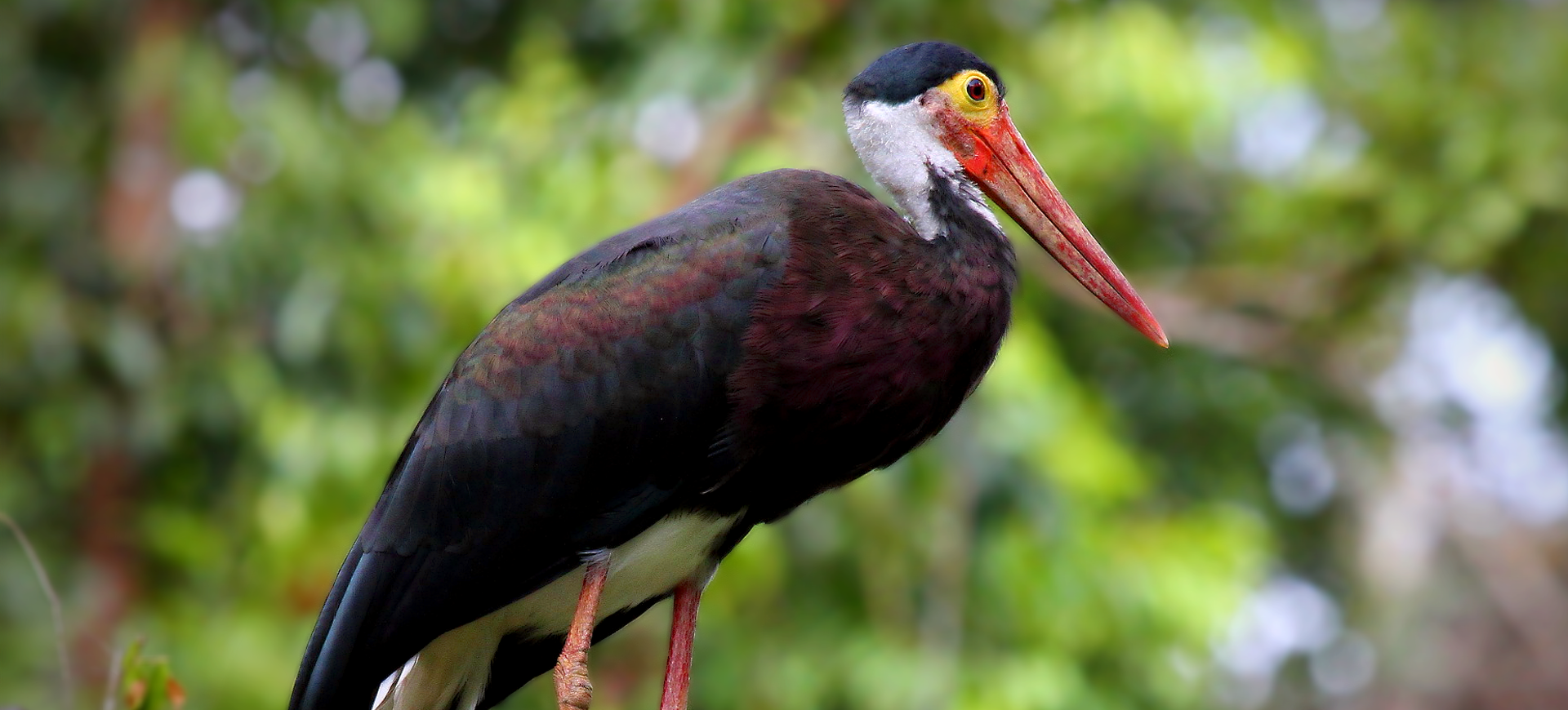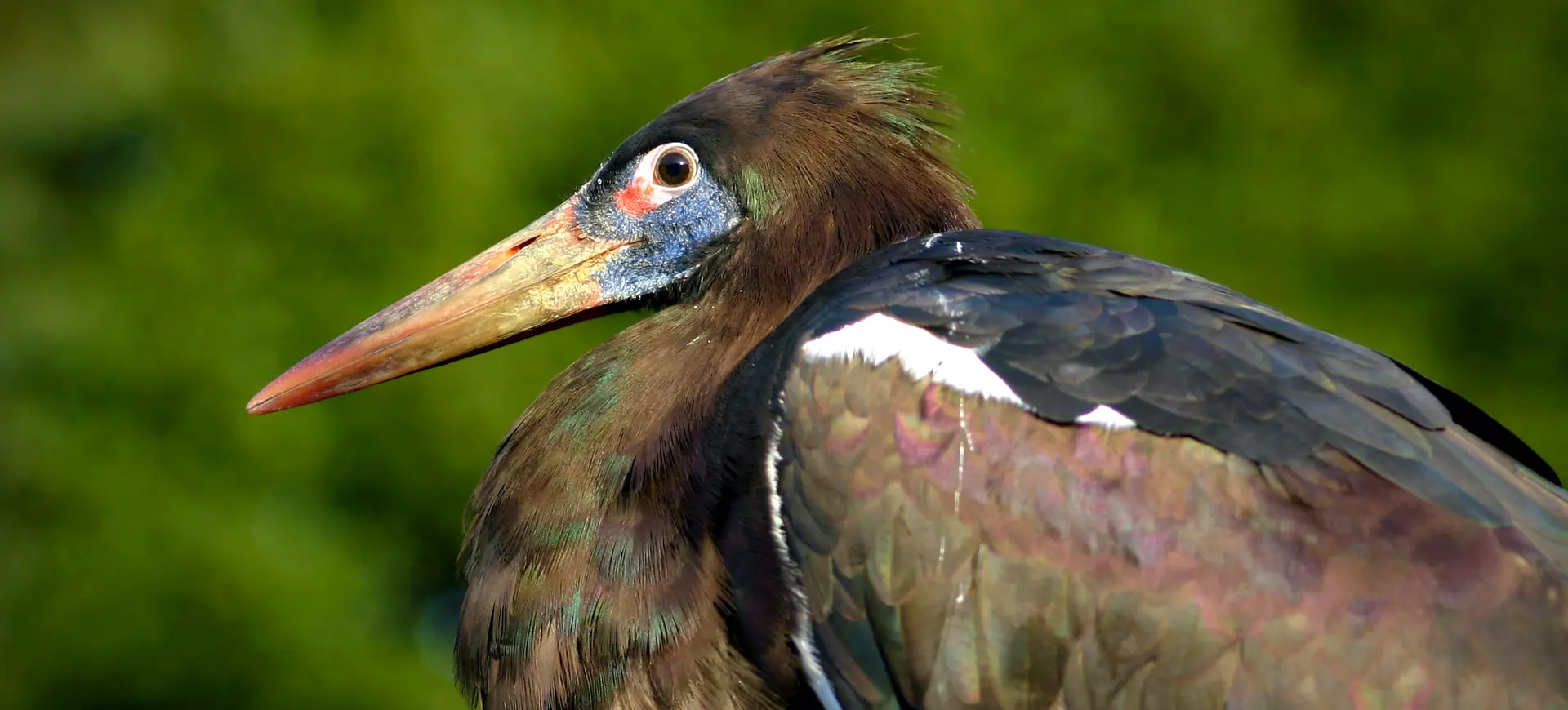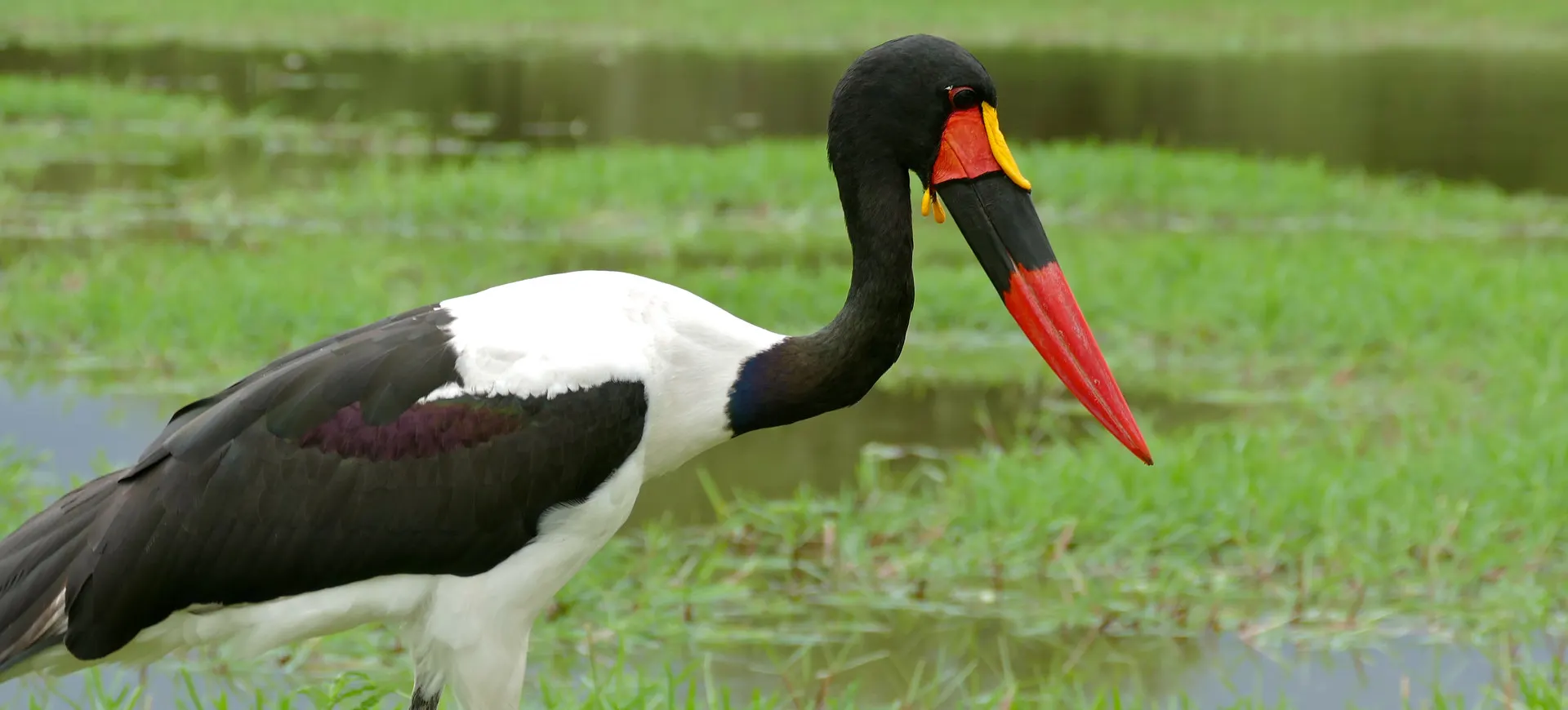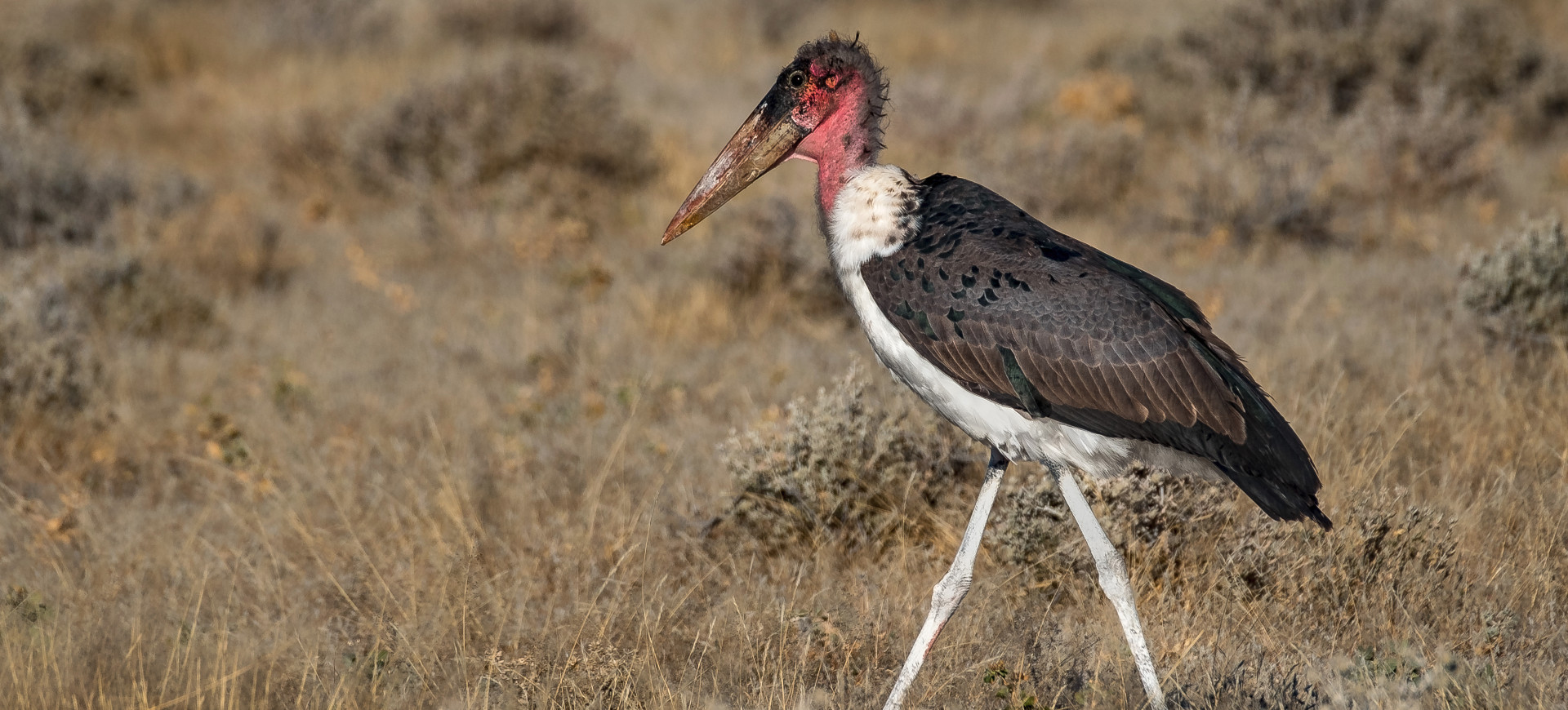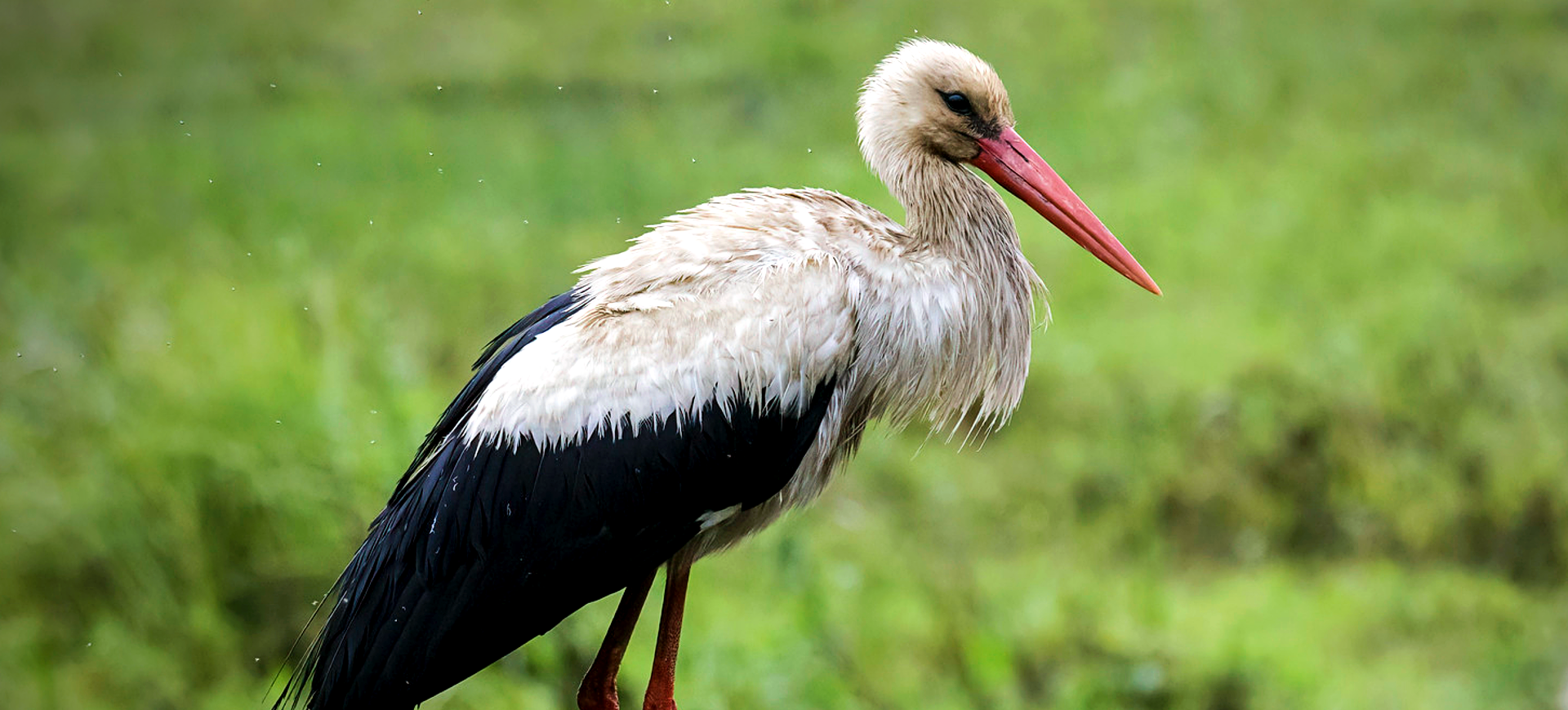Overview
The Wood Stork, scientifically known as Mycteria americana, is a large wading bird found in the southeastern United States, Central America, and South America. It is the only stork species that breeds in North America. Recognizable by its bald head and long, thick bill, the Wood Stork stands out among other waterbirds. It has a predominantly white body with black flight feathers, and its long legs and neck are adapted for wading in shallow waters.
Wood Storks are social birds, often found in large colonies during the breeding season. They prefer freshwater and estuarine habitats such as marshes, swamps, and lagoons, where they feed on fish and other small aquatic animals. These birds are known for their unique foraging technique, called “grope feeding,” where they open their bill in the water and snap it shut when they feel prey.
Wood Storks are impressive in flight, with a wingspan reaching up to 5.5 feet (167 cm). They can often be seen soaring on thermals, holding their necks outstretched. Conservation efforts have been crucial in recent years, as their populations have faced challenges due to habitat loss and changes in water management.
Taxonomy
Kingdom
Phylum
Class
Order
Family
Genus
Species
Type
Physical Description:
The adult Wood Stork is a large bird, standing about 33 to 45 inches tall. Its plumage is mostly white, with black flight feathers on the wings and tail. The head and upper neck are bald and dark grey, a characteristic feature of the species. The bill is long, thick, and slightly curved, adapted for their unique feeding method.
Juvenile Wood Storks have a more brownish plumage and a feathered head, which becomes bald as they mature. Adults’ legs and feet are greyish, turning pink during the breeding season. These physical adaptations allow the Wood Stork to efficiently forage in its wetland habitat and regulate its body temperature in the hot, humid environments it frequents.

Lifespan: Wild: ~10 Years || Captivity: ~20 Years

Weight: Male & Female: 4.4-7.9 lbs (2-3.6 kg)

Length: Male & Female: 39-45 in (100-115 cm)

Height: Male & Female: 33-45 in (84-115 cm)

Wingspan: Male & Female: 60-65 in (153-167 cm)
Characteristic:
Native Habitat:
Wood Storks inhabit various wetland habitats, including freshwater marshes, swamps, ponds, and estuaries. They are typically found in areas with open water, trees, and emergent vegetation. These habitats provide the necessary resources for feeding, nesting, and roosting.
Their preference for wetlands is linked to their feeding habits. The fluctuating water levels in these habitats create conditions conducive to their unique method of tactile foraging. The presence of Wood stalks is often an indicator of healthy wetland ecosystems.
Biomes:
Biogeographical Realms:
Continents:
Diet:
Diet & Feeding Habits:
The diet of the Wood Stork primarily consists of fish, supplemented by amphibians, crustaceans, and large insects. They feed in shallow waters, using their sensitive bills to detect and capture prey. This tactile feeding method allows them to feed in low visibility in murky waters.
Wood Storks require a specific type of wetland habitat with a mix of shallow and deeper waters for optimal foraging. The changing water levels in their habitat, often related to seasonal rains, play a crucial role in their feeding success. During the dry season, as water levels drop, fish become concentrated in smaller areas, making them easier for the storks to catch.
Mating Behavior:
Mating Description:
Wood Storks are colonial nesters, with breeding colonies often consisting of hundreds of pairs. They typically breed during the dry season when water levels are lower, and fish are more concentrated and accessible. Nest sites are usually located in trees or shrubs in or near water.
The male and female build the nest, a large platform of sticks lined with green leaves. The female lays 2 to 5 eggs, which both parents incubate. After hatching, both parents feed and care for the chicks. The cooperative effort in raising the young is crucial for the survival of the offspring.
Reproduction Season:
Birth Type:
Pregnancy Duration:
Female Name:
Male Name:
Baby Name:
Social Structure Description:
Wood Storks are social birds, often seen in groups, especially during the breeding season. They form large breeding colonies, which provide safety in numbers and increase the efficiency of feeding the young. Outside the breeding season, they may gather in communal roosts at night.
Their social behavior is also evident in their foraging habits, as they feed in groups. This social foraging behavior may increase their efficiency in locating and capturing prey. The cooperative nature of their nesting and chick-rearing practices highlights the importance of social bonds and group living in this species.
Groups:
Conservation Status:
Population Trend:
While historically, the Wood Stork faced significant population declines, conservation efforts and habitat restoration projects have led to some recovery in their numbers. Habitat protection and improved water management practices have been key to this success. However, ongoing challenges such as habitat loss and changes in hydrology due to human activity continue to impact their populations.
Conservation programs focusing on the protection of wetlands and the restoration of natural water flows have been effective in supporting their breeding and feeding needs. Continued monitoring and research are essential to understand population trends and the impacts of environmental changes.
Population Threats:
The primary threats to Wood Storks include habitat loss and degradation, primarily due to drainage of wetlands, development, and changes in water management. Alterations in their habitats’ hydrology can impact food availability, particularly during the breeding season when they require concentrated fish populations to feed their young.
Pollution and environmental contaminants can also affect their food sources and nesting areas. Climate change also poses a long-term threat, potentially altering the hydrology and ecology of their wetland habitats.
Conservation Efforts:
Conservation efforts for Wood Storks have focused on protecting and restoring wetland habitats. This includes the creation and management of protected areas, as well as efforts to restore natural water flows in modified landscapes. Partnerships between government agencies, conservation organizations, and local communities have been crucial in these efforts.
Education and outreach programs help raise awareness about the importance of wetland conservation for Wood Storks and other wildlife. Research and monitoring programs continue to provide valuable information on their population dynamics, habitat requirements, and responses to conservation measures.
Additional Resources:
Fun Facts
- Wood Storks are among the few bird species worldwide that rely on tactile feeding.
- They can close their bills in as little as 25 milliseconds to catch prey.
- The bald head of the Wood Stork adapts to a messy feeding lifestyle, as it helps keep the head clean.
- Wood Storks have been known to travel up to 80 miles (130 km) from their nesting sites to find food.
- They are indicator species for the health of wetland ecosystems.
- Wood Storks are majestic in flight, often soaring with their legs extended and neck outstretched.
- They use thermals to soar and glide, conserving energy during flight.
- The Wood Stork is the only stork that breeds in the United States.
- Their nesting colonies can be quite large, sometimes including thousands of birds.
- Conservation efforts for Wood Storks have been a success story, demonstrating the effectiveness of habitat protection and restoration.











